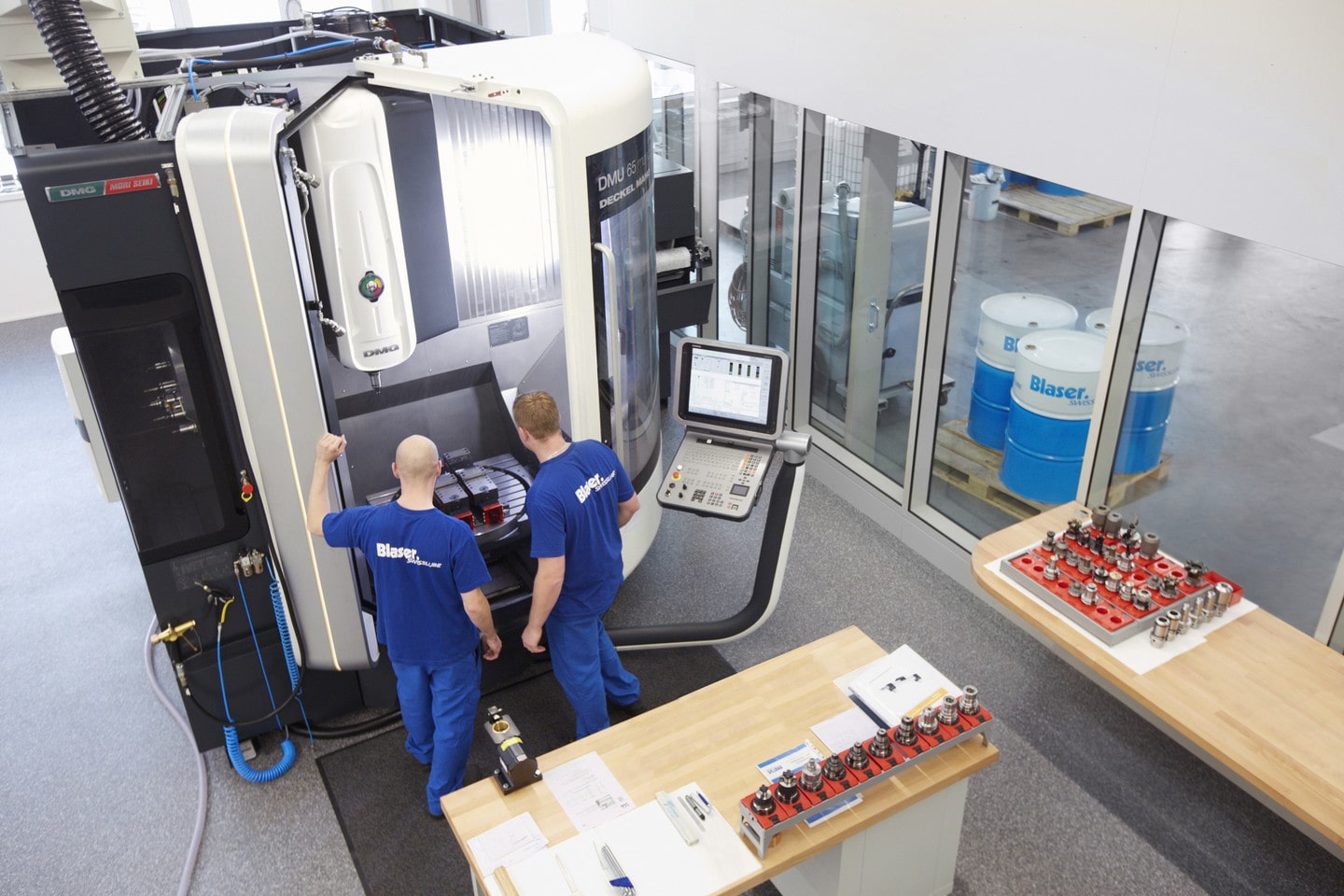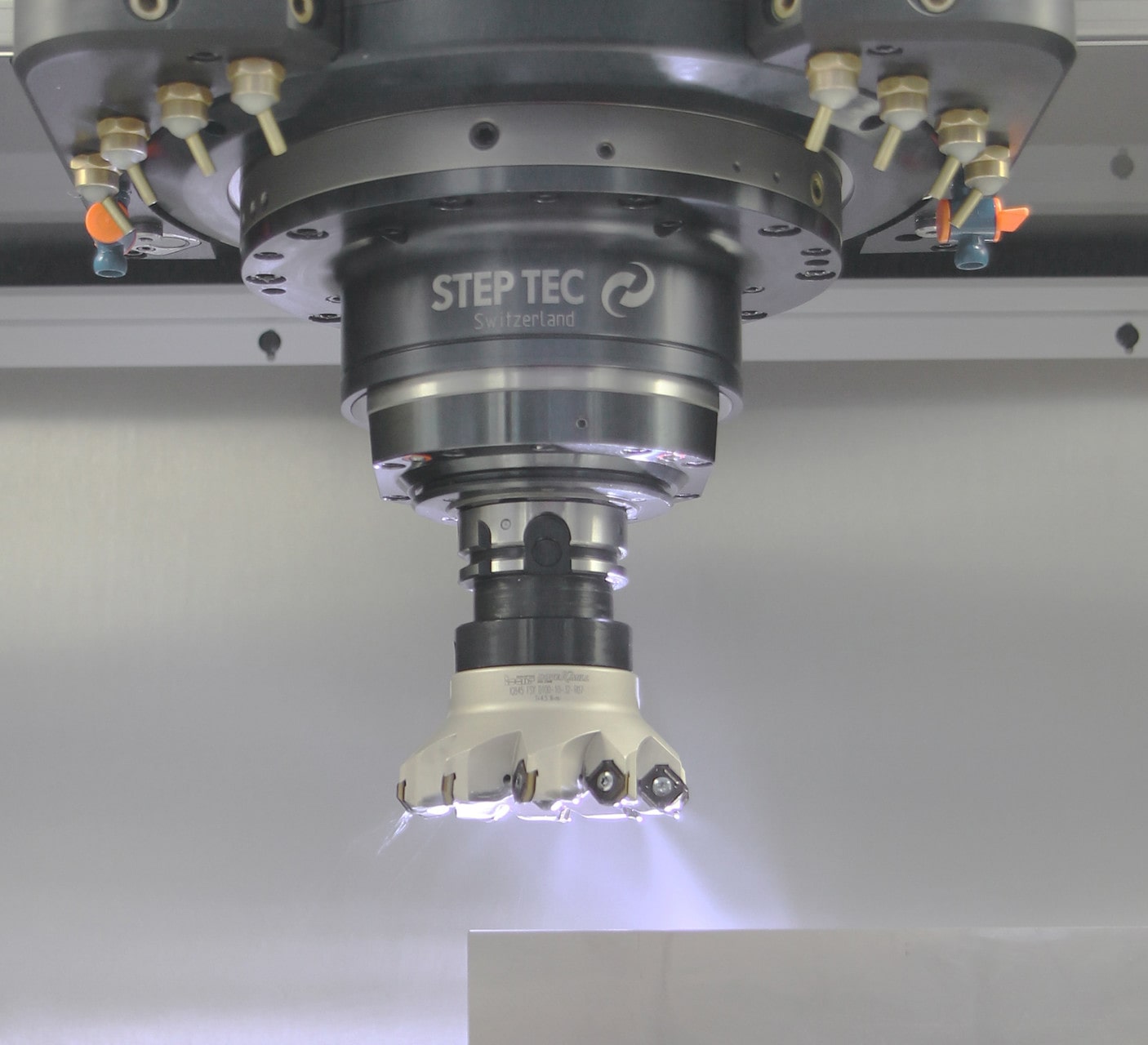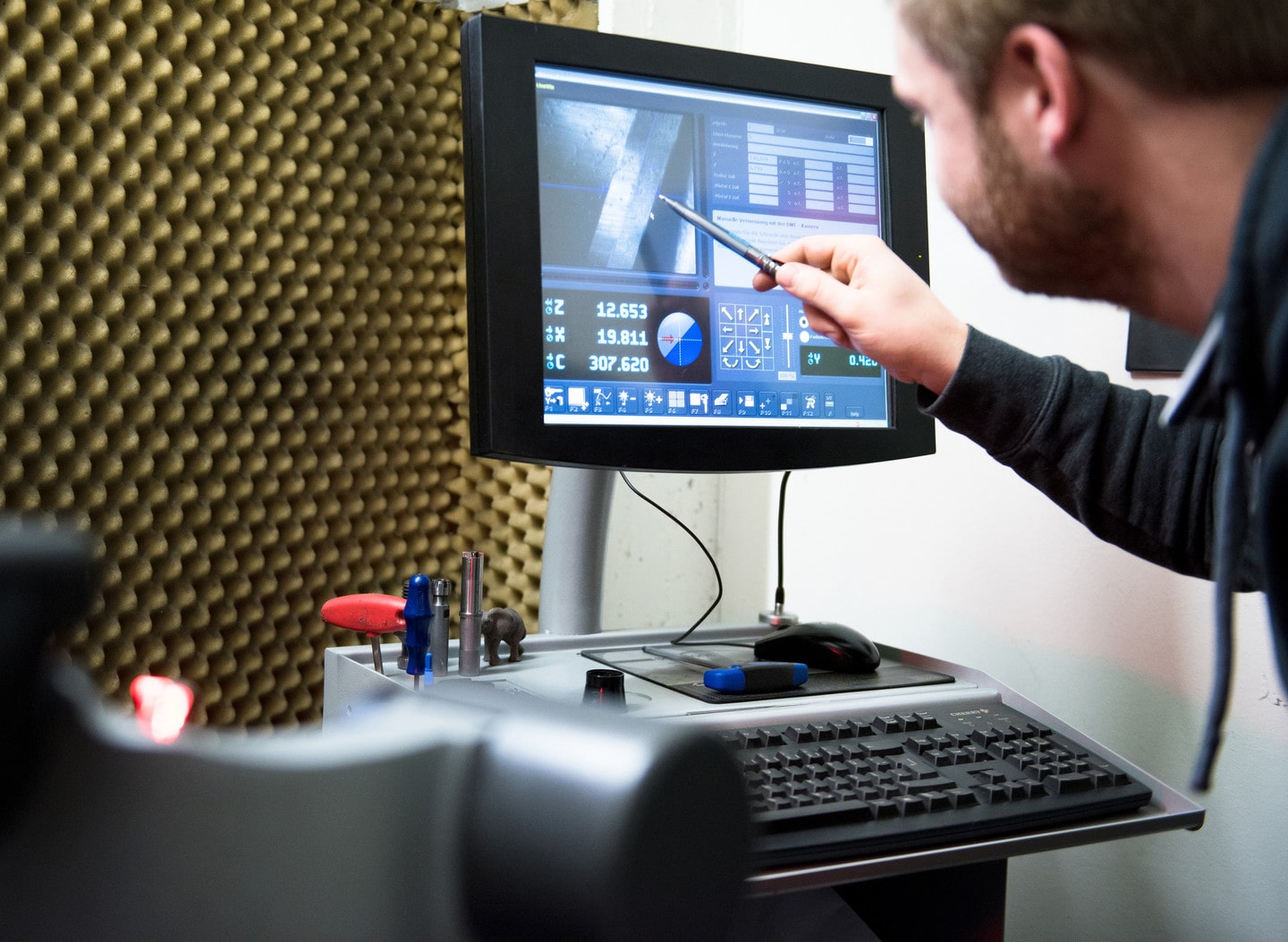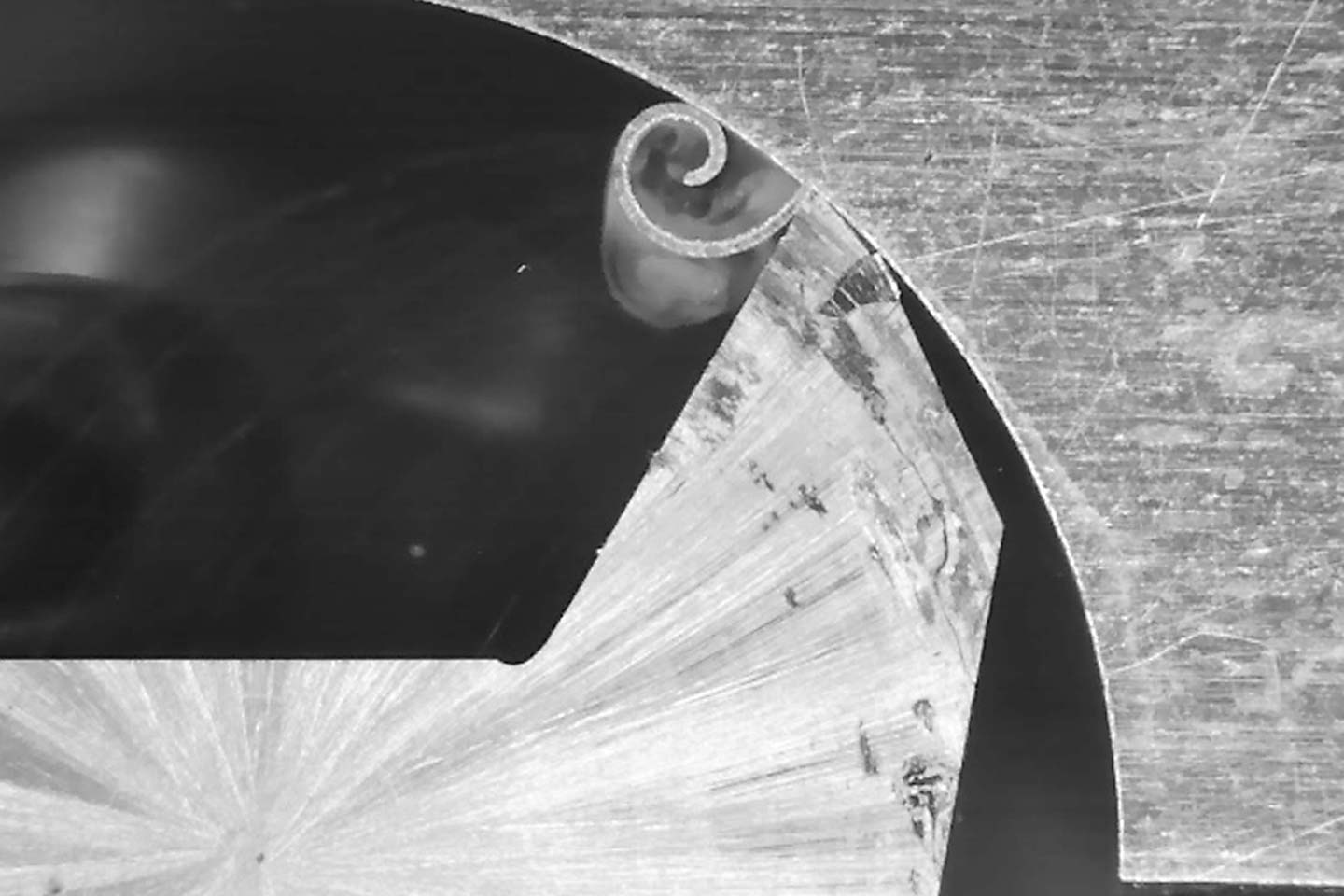Cutting and grinding fluid tests – what needs to be considered in cutting and grinding fluid management?
Blaser Swisslube’s experts are bringing efficient coolants to market. But not before the products are subjected to in-depth performance tests at the Blaser Swisslube Technology Center. The testing equipment now includes a microscope camera for measuring tool wear and the spike sensor system from pro-micron for measuring cutting force. This allows for faster collection of meaningful data that is of benefit to the user.
You need to proceed with care when comparing cutting and grinding fluids with one another. In the first part I explained the points to be noted with materials and tools. We now turn our attention to the cutting and grinding fluid and its handling. The cleaning of the machine—before filling—is the key to the successful use of the cutting and grinding fluid. You’ll find plenty of information and tips on handling our cooling lubricants in our application videos.
Blaser’s Competence Center
After the machine has been thoroughly cleaned, two factors are particularly important for subsequent filling (with water-miscible cutting and grinding fluid):
- The cutting and grinding fluid concentration
- Water quality
The cutting and grinding fluid concentration
The concentration with which the cutting and grinding fluid is applied influences both the performance and the stability of the emulsion. The refractometer factor must be taken into account when checking the concentration with the refractometer. This is always shown on the product label of our products.
This factor is multiplied by the refractometer reading and gives the effective concentration of the cutting and grinding fluid.


The influence of the refractometer factor. Example with factors 1.0 and 1.5.
We always work with the same concentration during our machining tests in the Technology Center. For general machining, this is 8 percent. By contrast, the tests for grinding are run with a concentration of 4 percent. Please note the application limits on the data sheet of the respective product.
The concentration is checked daily during the experiments. In order to ensure the reproducibility of the test results, the deviation from the target concentration must not exceed a maximum of 0.5% during the entire test period. Furthermore, the total amount of cutting and grinding fluid must not fluctuate excessively over the entire duration of the test. Otherwise the settling time in the tank is too short or too long. This is achieved with regular top-ups (addition of very low concentrations of emulsion to compensate for evaporation).
Water quality
As the emulsion is mixed with water, the quality, including the hardness of the water, is of great importance. Soft water, for example, promotes foaming. In Switzerland, Germany and Austria we tend to have the problem of water that is too hard, i.e. water that is rich in minerals. If the total hardness is too high, the product can in the worst case become unstable, inevitably leading to premature emulsion exchange.
To enable us to test products that are designed for soft water, we have our own desalination plant. Through the targeted addition of calcium acetate solution to the treated water, we can then adapt the hardness to the required test setup. Because each product reacts individually to different water hardnesses, the recommended range of water hardness, which is indicated on the product data sheets, must be adhered to.

The quality of the water can be determined in a matter of seconds thanks to test strips.
Continuous management of the cutting and grinding fluid during operation
Management and maintenance are very important for both water-miscible emulsions and non-water-miscible metalworking oils.
The influence of the band filter
Our machines in the Technology Center are equipped with band filter systems. These are responsible for filtering out the suspended particulate. Filtering protects the pumps and increases the sump life of the cutting and grinding fluid.
The filter fleece used in plays a particularly important role here. Depending on the composition, increased foaming can occur. This is because foam-promoting ingredients are permanently released and migrate into the cutting and grinding fluid.
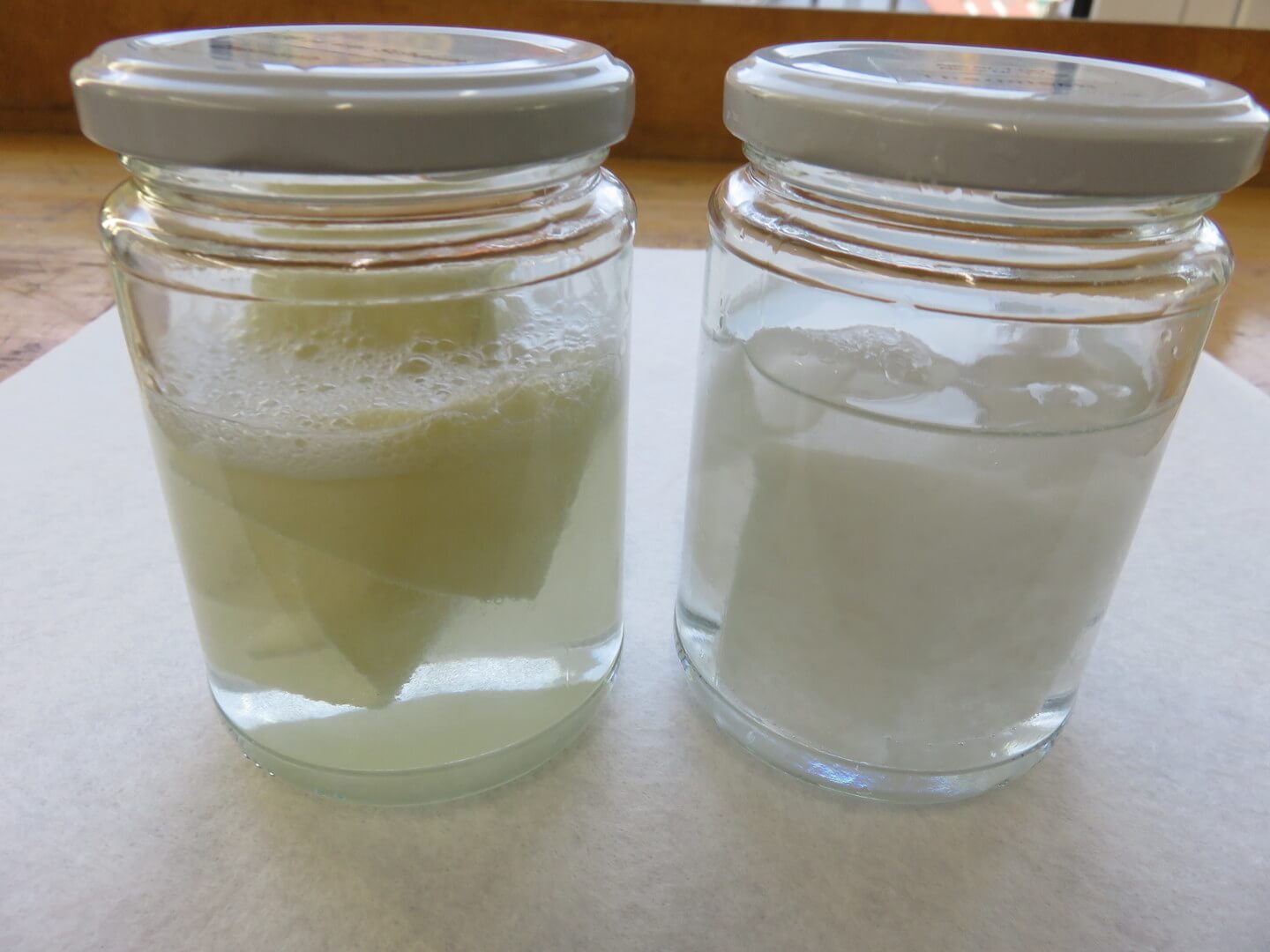
Two different types of band filters in pure tap water having been shaken briefly by hand. The glass on the left—with unsuitable fleece—forms foam.
The chips and particles produced during grinding are smaller. That’s why we use a centrifuge, which filters the cutting and grinding fluid through centrifugal force.
Skimmer
Cutting and grinding fluids are developed in such a way that tramp oil (e.g. waylube or hydraulic oil) does not mix with the cutting and grinding fluid and floats to the top. This top film of oil can be removed with a skimmer. This prevents a layer of oil from forming which would prevent oxygenation. This increases the sump life of the cutting and grinding fluid considerably.
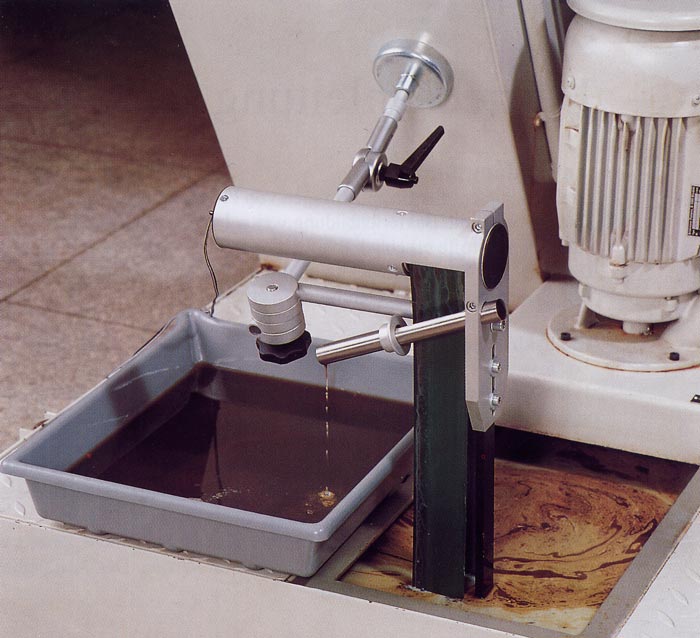
Example of a band skimmer for removing tramp oil
(source: http://arbeitssicherheit-umweltschutz-shop.com/arbeitssicherheit-und-umweltschutz/online-shop/oelskimmer-und-filtertechnik/bandskimmer-oelskimmer/bandskimmer-typ-300-28/?TID=raw)
